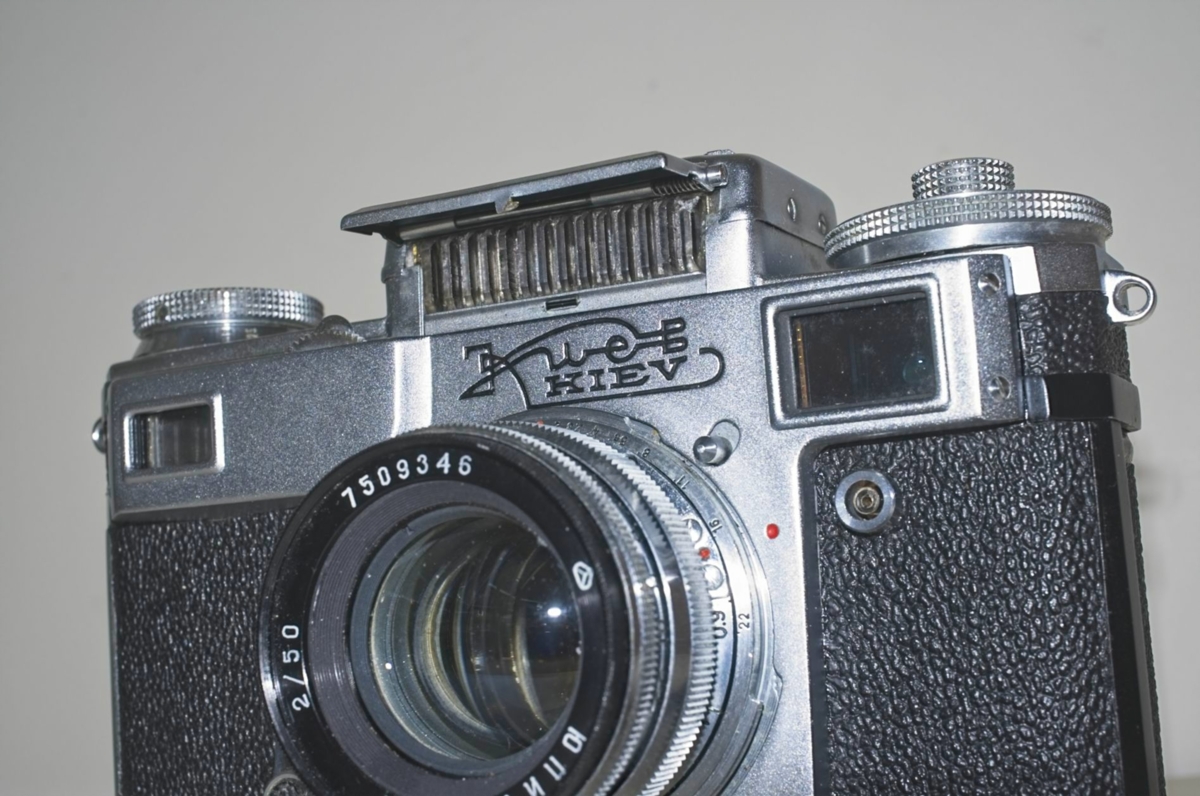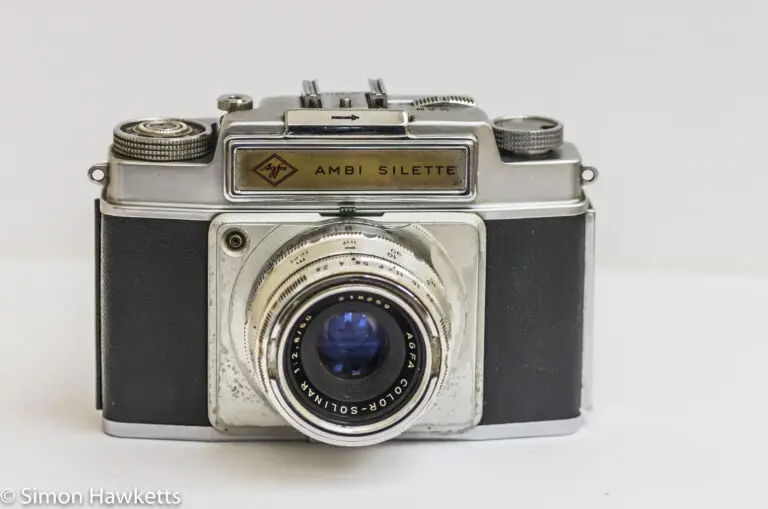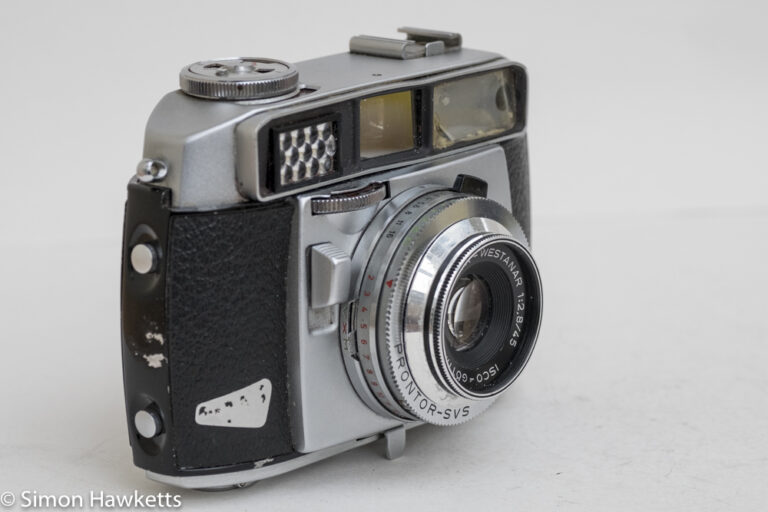Kiev 4 rangefinder with jupiter 8
This post looks at the Kiev 4 35 mm rangefinder camera, which was a soviet made copy of a Contax II rangefinder. The model shown here is fitted with a Jupiter 8 lens, and the serial number of 7506090 suggests it was probably made between about 1975 and 1980.
Kiev 4 Rangefinder Pictures

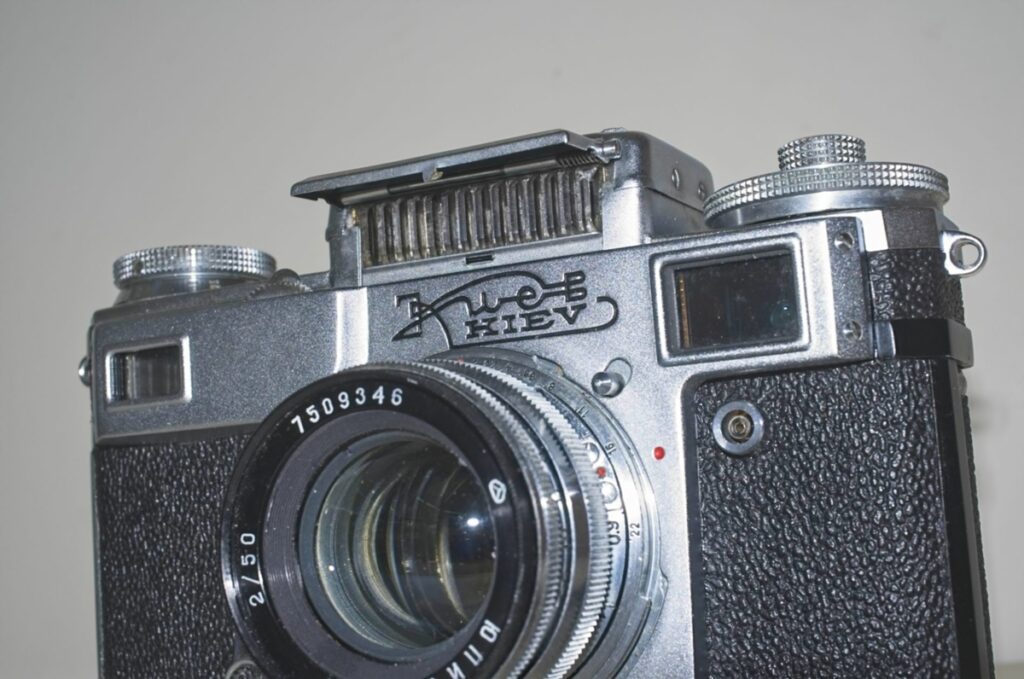
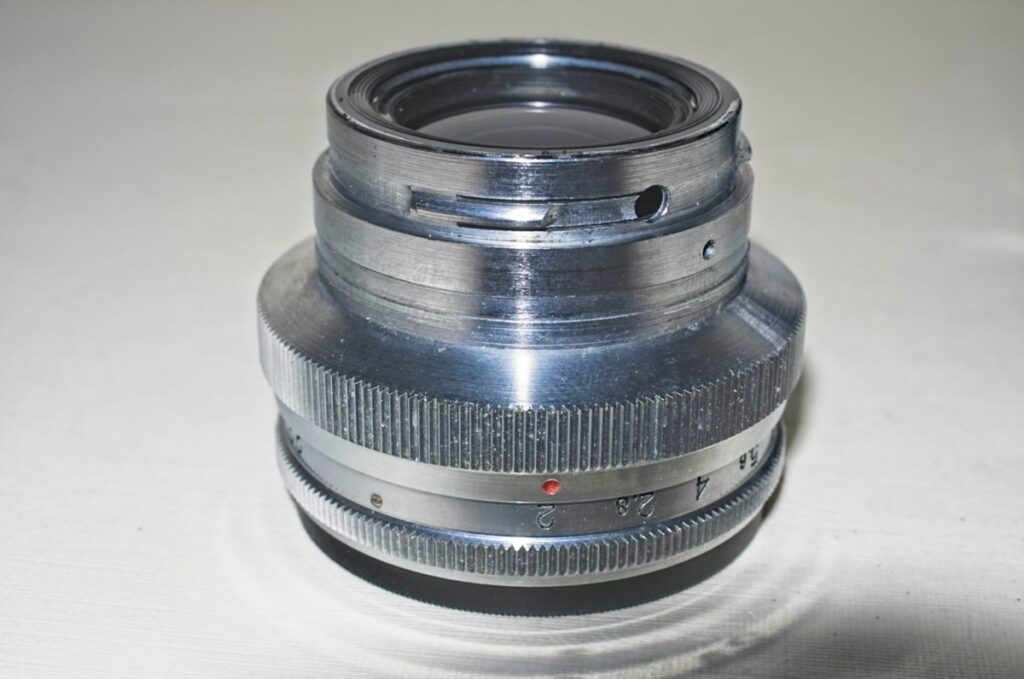
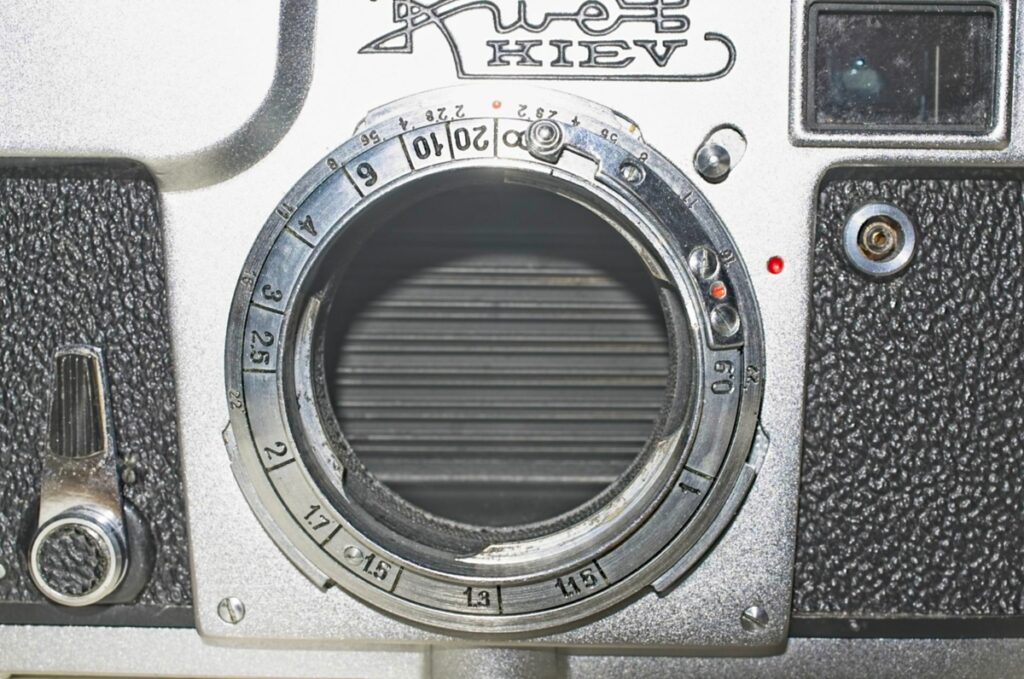
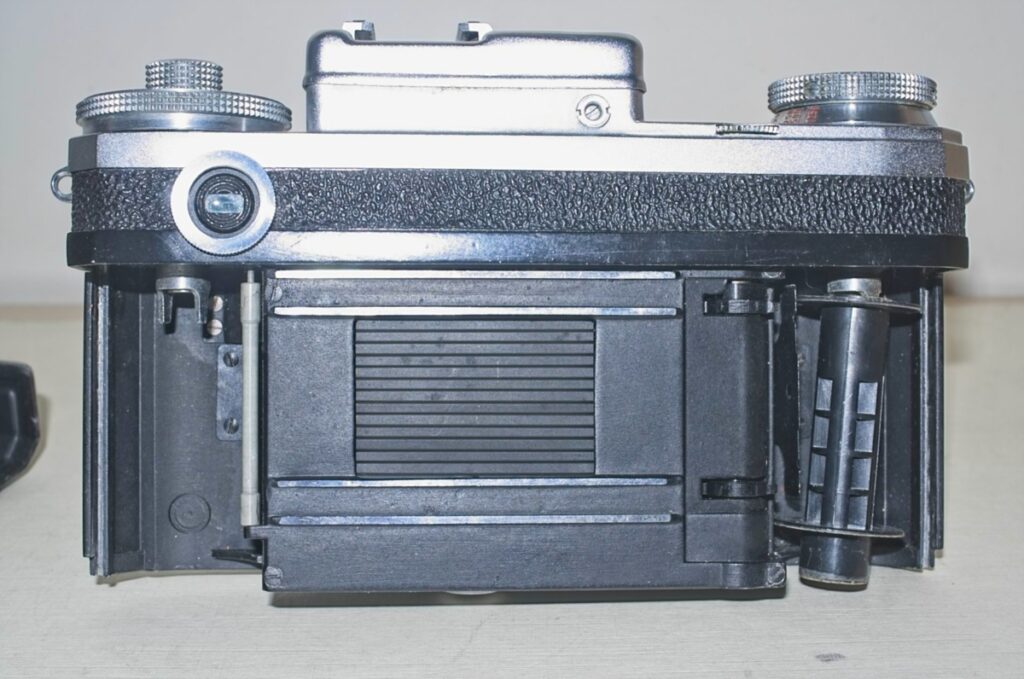
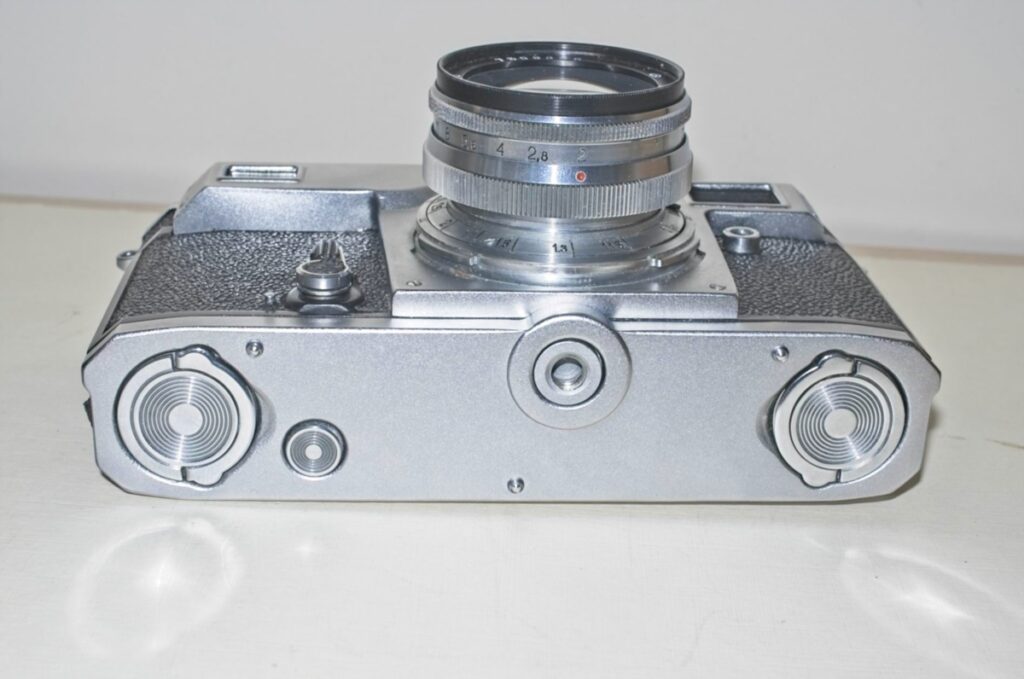
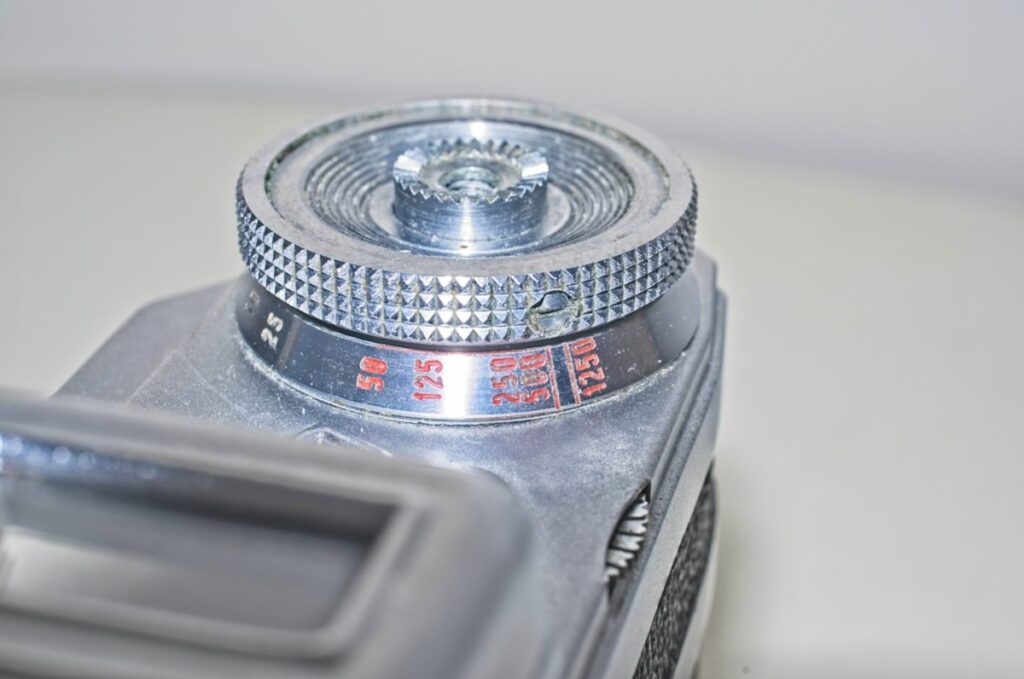
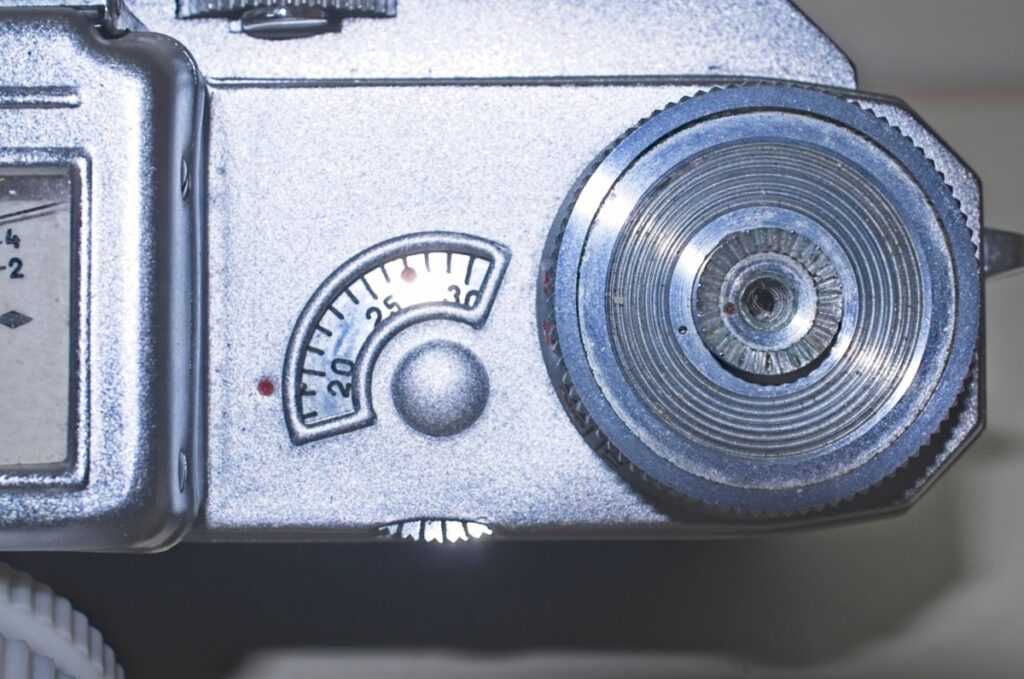
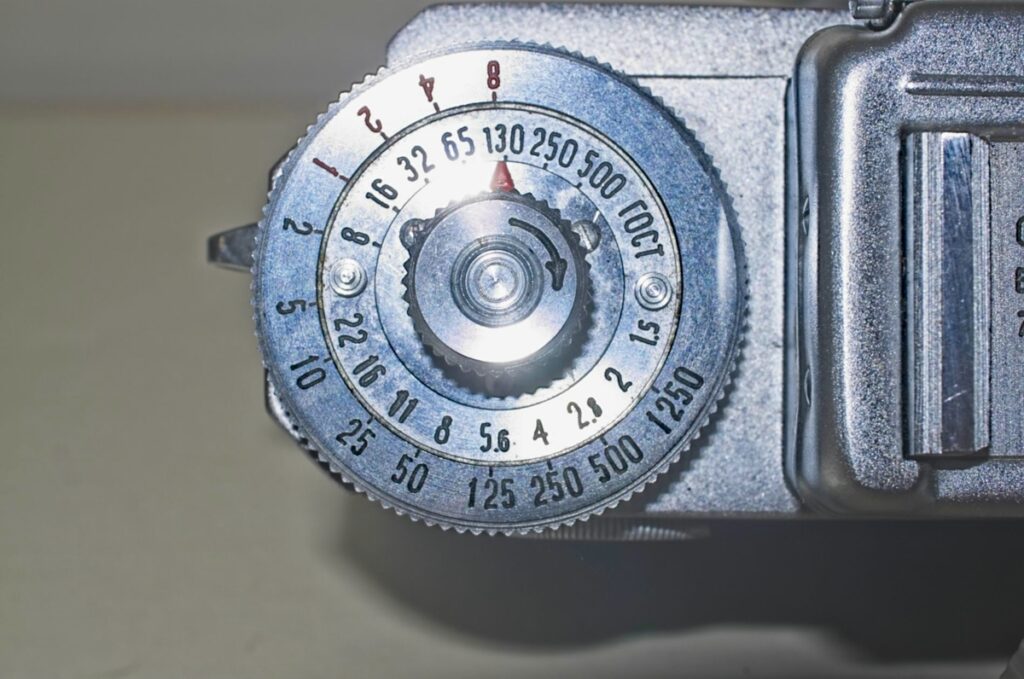
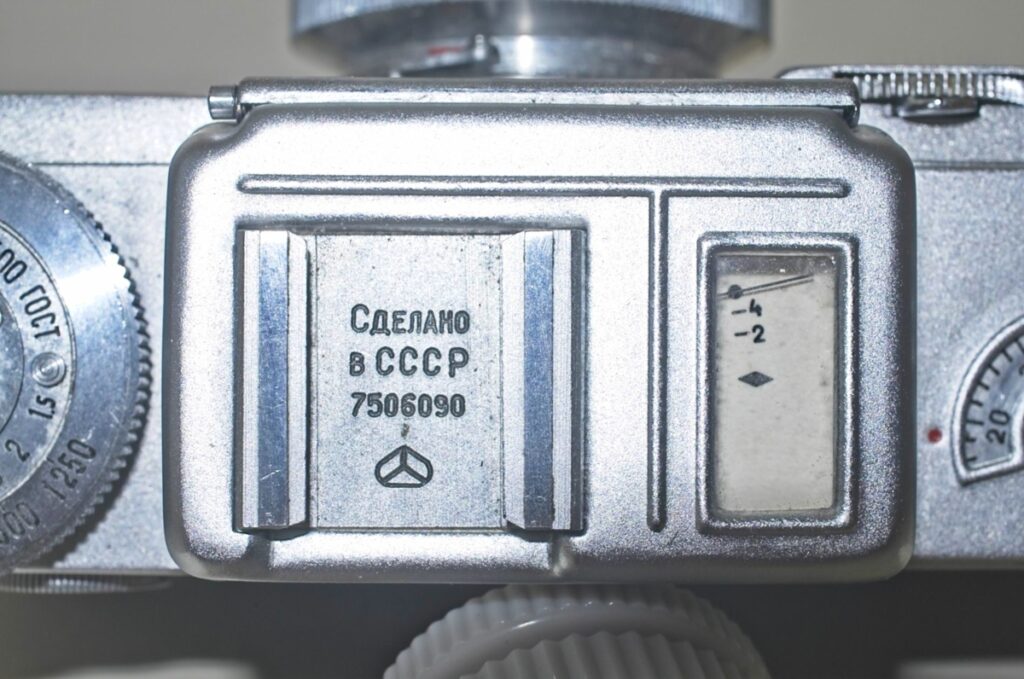
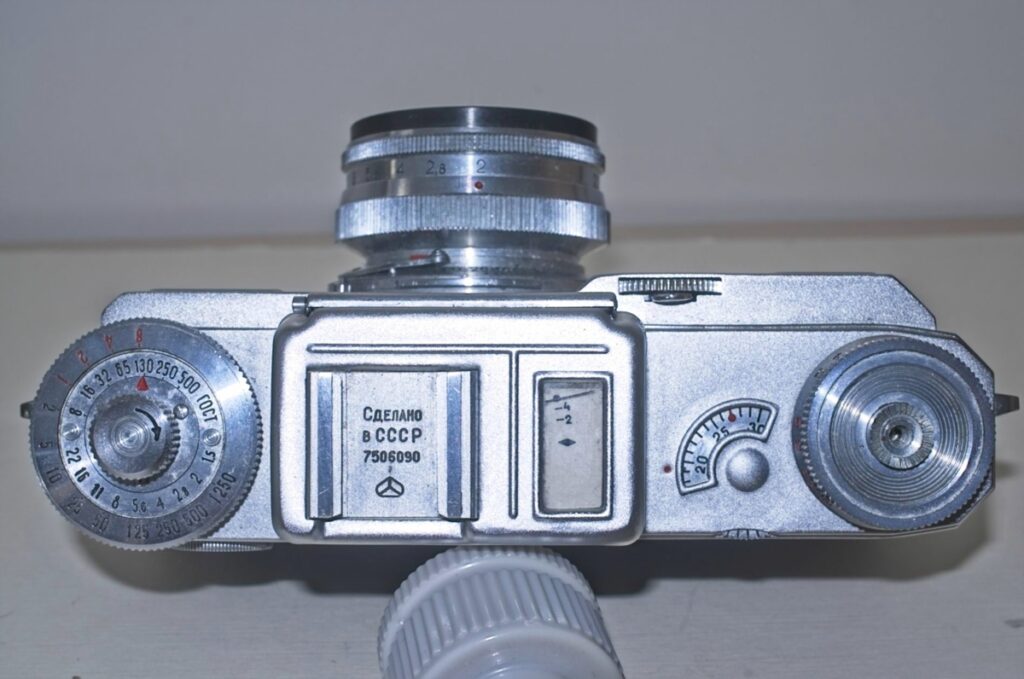
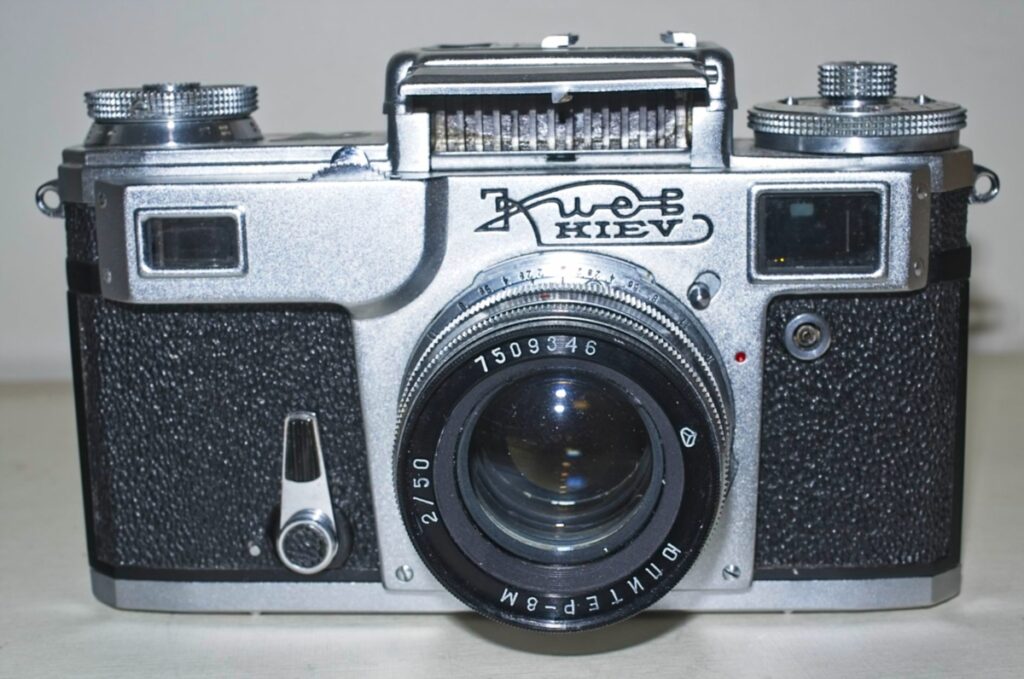
My Kiev 4 Rangefinder camera
I obtained my copy of the Kiev 4 from a local charity shop where a friend of my wife works. She knows I’m a camera collector and when my wife bumped into her in the town a few weeks ago she mentioned that they had a set of cameras in the shop which hadn’t been sorted out at that time. I little while later she sent me a picture of the bundle of cameras and I spotted this Kiev 4 in the group and bought it for £10.
It seems the camera was probably looked after quite well by its previous owner because, unusually for a camera this old, all the shutter speeds seem to work and there is very little in the way of surface corrosion or dirt on the camera body.
Kiev 4 Description
The Kiev 4 follows the pattern of many Russian made cameras of the 1950s and 60s in that it is a copy of a highly prized camera made in Germany – in this case the Contax III.
I don’t own a Contax III, so I can’t say how close to that camera the Kiev 4 is, but in terms of layout and look it seems pretty close. I suspect the same cannot be said for the engineering.
Focusing system
The most noticeable feature of the camera is the way the focus system works, and it is the element of the camera’s design which makes it unique in my collection.
The camera is fitted with a 50 mm Jupiter 8 lens, which was quite common among many Russian copy cameras, but instead of the lens having a focus helicoid, the focusing is carried out by the camera itself. The lens fits into the camera body via a bayonet mount and there is a wheel set in the top of the camera, above the rangefinder window, which is used to turn the lens housing and adjust the focus. This wheel is locked with a small lever which is naturally pushed out of the way as the wheel is turned, but once unlocked, the lens can also be turned by hand in the usual way.
One of the odd side effects of this system is that the camera can be focused without the lens being fitted on the body!
The camera uses a traditional rangefinder focusing mechanism, which for any readers who aren’t aware is a way of focusing which involves having two images which superimpose on each other at the point the camera is in focus. When you look through the viewfinder there is a small yellow square in the middle of the scene and within this square are two versions of the image. As the focus control is moved the two images move together or apart and when they exactly align on a point the camera is in focus for that distance.
As well as being controlled within the camera body, the focus system is also designed with a big distance between the two viewing ports. This makes the unit easier to precisely focus with because there is a large movement between the shortest focus point and the farthest (infinity).
One downside of the focusing arrangement on this camera however is that I found that it is very easy to get your hand in the way of the second window when holding the camera, which means the small yellow square which is used to set the focus disappears.
Exposure control
The camera is equipped with a non coupled light meter unit which sits on the top of the camera, with the light cell protected by a small metal flap which is opened to take a reading.
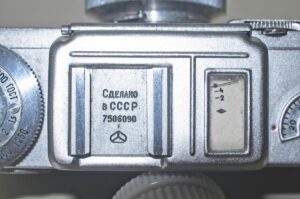
Interestingly, although my camera is something like 40 years old the light meter still works and by comparing it to a light meter app on my phone looks to still be quite accurate!
To take a reading, the photographer needs to have set the film speed on the light meter to match that of the film fitted to the camera. This is accomplished with the dial in the centre of the light meter control knob on the top of the camera. There is a small red triangle which is pointed to the approximate speed of the film – I say approximate because not all film speeds are marked, and the dial is quite small.
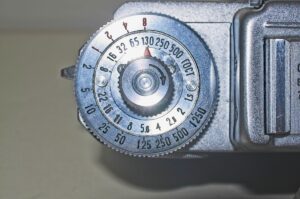
Once the speed is set and the flap over the light meter lifted, the outer dial of the same control is rotated until the meter at the top of the camera is pointing to the diamond shape at about mid-range on the meter dial. Once that is done, the exposure can be read from the same dial – the outer numbers refer to a shutter speed and the inner dial numbers refer to the aperture. Any combination which matches can be used, and they are simply transferred to the relevant controls on the camera.
As with several other Russian copy cameras (like the Zorki 4 for example) the shutter should be cocked before the shutter speed is set.
If a long exposure is going to be taken with a tripod, the shutter can be set to B and then when pressed the release button can be turned and locked to hold the shutter open for as long as required. It is also threaded for a cable release as well.
Interestingly, the fastest shutter speed of 1/1250 is faster than any of the other Russian copy cameras I’ve seen, presumably because the Contax II also had a 1/1250 setting.
Other features
The Kiev 4 is equipped with an accessory socket on the top of the camera, although it is not a ‘hot shoe’ variety and the flash would need to be plugged into the socket fitted to the front of the camera. Because the shutter is a focal plane variety, the flash sync speed is quite slow at 1/25th sec.
On the front of the camera is a mechanical self-timer mechanism which is used to delay the picture taking by about 10 seconds and on the top of the camera, next to the shutter speed dial, is a frame counter.
On the bottom of the camera is a tripod socket, mounted under the centre of the camera, and there are two half turn, lift up controls for releasing the back of the camera for loading the film. This camera is similar to other Russian cameras of the same age in that the whole of the back of the camera case pulls off for loading and unloading.
Kiev 4 Specifications
- Kiev 4 rangefinder camera (model 4 made between 1974 and 1980)
- Russian copy of Contax III camera
- Vertical focal plane shutter
- 1/2 sec to 1/1250 sec + B & T shutter speeds
- Non-coupled light meter
- Accessory socket
- Tripod on base
- Removable half case for loading and unloading
- Bayonet mount lens
- Flash sync socket synced at 1/25 and slower
- Frame counter
- Focus adjustment wheel on camera body
- Self timer
- Jupiter 8 50mm f/2 lens
- Coupled rangefinder focus assistance
- Serial No: 7506090
- Manual available on-line here
Discover more from Everything Vintage
Subscribe to get the latest posts sent to your email.

